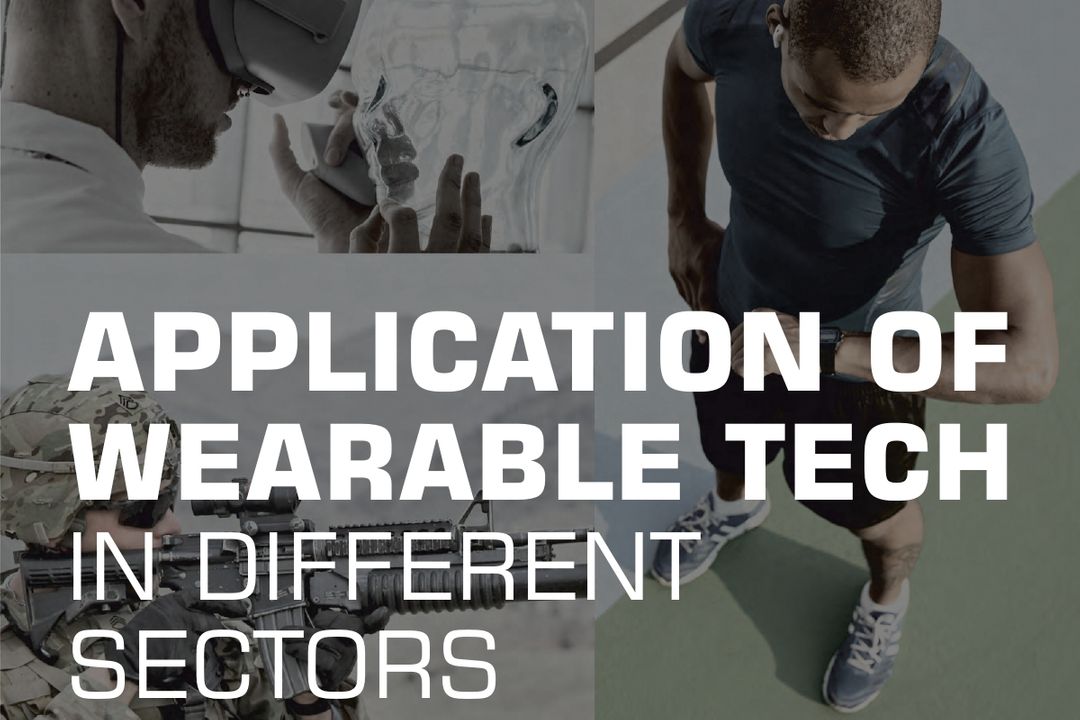Wearable tech has truly been at the forefront of technological advancements. Combined with advances in sensor technology, computing power and connectivity, the use of smart wearables is spreading widely. In fact, the market research study by Markets and Markets suggests that the wearable device market is expected to reach USD 14.41 billion by 2022 from USD 6.22 billion in 2017, at a CAGR of 18.3%.
The implementation of wearable tech is not only limited to consumer market, as it’s revolutionizing the industry sector as well. Along with human lives, wearable tech is also shaping the business world. It was well arrived in the consumer’s space, and is also gaining commonplace in industry market.
There’s no doubt in how it has vividly contributed in making human lives simpler, but it also has been redefining the business arena as a means of boosting productivity, reducing errors, and communicating large amounts of data remotely.
The contribution of wearable tech in some commercial sectors, particularly healthcare, manufacturing, and defense and sports, has been immense. Additionally, it is also playing a significant role in sectors like law enforcement, education robotics and smart textiles.
Let’s see how wearable tech has transformed above sectors:
Healthcare Sector (From industry perspective)
We are heading towards a future where patients and doctors can be connected remotely. The wearable tech has enabled medical professionals to detect life-threatening conditions, collect biometric data to help with patient diagnoses, and even administer medicine to alleviate pain. In fact, the data collected by medical devices is helping healthcare organizations to improve their healthcare facilities and infrastructure. Even in the current crisis, it has positively contributed in prevention of spreading the virus through means of devices, as they helped in early detection of symptoms and providing timely treatment before it passes to others.
Wearable tech is not wholly adopted in the medical industry yet, due to its concerns of stringent safety and accuracy standards. But, very soon the factors of accuracy and reliability would be resolved and these devices will make an astonishing comeback.
Manufacturing Sector
There was a dire need for technology in the manufacturing sector as safety was the major concern there. A smart wearable could present the worker of industries with environmental and safety information like alerts if a machine is malfunctioning or if a surface is too hot to touch or if there are spilt hazardous fluids nearby.
Secondly, it has allowed businesses to give hands-free training to its employees. Let’s take the example of General Motors, as they use the Google Glass to provide better interactive training for their employees directly in their field of work.
Moreover, when this tech combines with AR can do predictive modeling. Through this, engineers can see how final product will look like before even physically completing it.
Sports
In sports industry, the contribution of wearable tech has mainly been in training of a sports person and his or her performance measurement. For example, The National Hockey League (NHL) collaborated with one company to develop trackers that can measure everything that happens on the ice.
Law Enforcement
Wearable tech has been able to look after the concern of safety of police officers while they are on field. Body-worn cameras can provide them with a hands-free method of tracking and reviewing their daily activity.
Defense
Aerospace and Defense industries are eagerly looking out for new opportunities offered by wearable tech. Soldiers’ safety was always a concern in defense and thus, smart clothing’s wireless communication capabilities can help defense to track soldiers’ location, monitor their safety and potential hazards with greater accuracy.
Combined with Augmented Reality (AR), wearable tech is being integrated into visual systems to provide real-time information, and enhance decision making during immersive training or on deployment. For example, the use of ARA ARC4 system overcomes the need for soldiers to look down at maps or smartphone devices to access key geo-spatial information.
Robotics
In robotics, there are specifically device in the form of wearable robots that are used to enhance person’s motion or physical capabilities. This technology can be specifically useful for people with paralysis or any disabilities, as wearable robots can enable them walk or perform any moment, considering their illness.
Wearable Tech is positively spreading its wings in every sector and proving to be beneficial there. The cost, accuracy, and reliability are few concerns that are still making individuals and businesses skeptic about its adoption, but there is a belief that very soon this technology will rise beyond.

